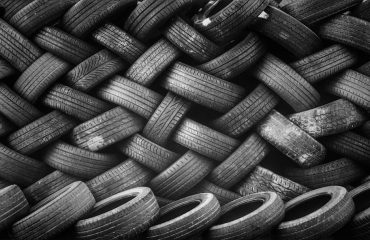Pipe bending and straightening are crucial processes in various industries, from construction and manufacturing to oil and gas. Achieving precise bends and ensuring straightness is essential for functionality, safety, and aesthetics. This comprehensive guide explores the different methods, tools, and considerations involved in mastering these techniques.
1. Understanding Pipe Material and its Impact on Bending and Straightening
The material of the pipe significantly influences the bending and straightening process. Different materials exhibit varying degrees of flexibility, ductility, and strength. Steel pipes, for example, require more force and specialized equipment for bending compared to more malleable materials like copper or aluminum. Understanding the material’s properties is crucial for selecting the appropriate bending and straightening techniques to avoid damage or failure. Factors to consider include:
- Yield Strength: The point at which the pipe begins to deform permanently.
- Tensile Strength: The maximum stress the pipe can withstand before breaking.
- Ductility: The ability of the pipe to deform plastically before fracturing.
- Wall Thickness: Thicker walls require more force and may necessitate different bending techniques.
- Pipe Diameter: Larger diameter pipes require more significant bending force and potentially specialized equipment.
Incorrectly assessing the material properties can lead to cracked pipes, kinks, or overall structural weakness.
2. Exploring Different Pipe Bending Methods
Several methods exist for bending pipes, each suited to different materials, diameters, and desired bend radii. These include:
- Manual Bending: Suitable for smaller diameter, softer pipes, often using hand tools like pipe benders. This method is labor-intensive and may not achieve high precision.
- Hydraulic Bending: Uses hydraulic presses to apply controlled force, allowing for precise bends in various pipe materials and diameters. This method is highly versatile and efficient.
- Rotary Draw Bending: A highly precise method that uses a rotating die to pull the pipe through, creating a smooth, consistent bend. This is ideal for tight radius bends and high-quality finishes.
- Roll Bending: Uses three rolls to progressively bend the pipe. This method is suitable for large-diameter pipes and long bends.
- Induction Bending: Uses localized heating to soften the pipe material before bending, allowing for sharper bends in thicker-walled pipes. This requires specialized equipment.
The choice of bending method depends on factors such as material properties, desired bend radius, production volume, and budget.
3. Effective Techniques for Pipe Straightening
Straightening bent pipes requires careful consideration of the material and the extent of the bend. Common methods include:
- Mechanical Straightening: Uses specialized straightening machines that apply controlled force to gradually straighten the pipe. This method offers high precision and is suitable for various pipe materials and sizes.
- Hydraulic Straightening: Employs hydraulic presses to apply controlled pressure, gently straightening the pipe without causing damage. This method is effective for larger diameter pipes and those with significant bends.
- Manual Straightening (for minor bends): For minor bends in smaller, softer pipes, manual straightening with tools like hammers and mallets might be feasible. This method requires skill and caution to avoid causing further damage.
- Heat Straightening: Involves localized heating to soften the bent area before applying straightening force. This method is useful for stubborn bends but requires expertise to avoid overheating and material damage.
Choosing the correct straightening method is crucial to avoid damaging the pipe and compromising its structural integrity. Over-straightening can lead to weakening of the pipe.
4. Essential Tools and Equipment for Pipe Bending and Straightening
The tools and equipment required depend on the chosen bending and straightening methods. Essential tools may include:
- Pipe Benders (handheld, hydraulic): For various pipe sizes and materials.
- Hydraulic Presses: For more powerful bending and straightening.
- Roll Bending Machines: For large-diameter pipes.
- Induction Heating Units: For heat bending.
- Straightening Machines: For precise straightening.
- Measuring Tools (calipers, tape measures): To ensure accuracy.
- Safety Gear (gloves, eye protection): To protect the operator.
Investing in high-quality tools and equipment is crucial for achieving precise and efficient results and ensuring operator safety.
5. Safety Precautions and Best Practices
Pipe bending and straightening can be hazardous if not handled correctly. Always prioritize safety by:
- Wearing appropriate safety gear: Gloves, eye protection, and hearing protection are essential.
- Using the correct tools and equipment: Ensure that the tools are in good condition and appropriate for the task.
- Following manufacturer’s instructions: Always adhere to the instructions provided with the tools and equipment.
- Working in a well-ventilated area: Some processes may generate fumes or dust.
- Properly securing the pipe: To prevent accidental slippage or injury.
- Regular maintenance of equipment: Ensuring equipment is in good working order prevents accidents.
By following these safety precautions, you can minimize the risk of accidents and injuries.
This guide provides a comprehensive overview of pipe bending and straightening solutions. Remember to always prioritize safety and choose the appropriate methods and tools based on the specific requirements of your project.
Tags: pipe bending, pipe straightening, hydraulic bending, pipe bending machine, pipe straightening techniques




